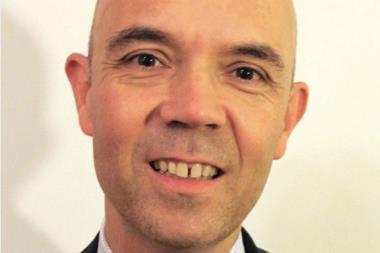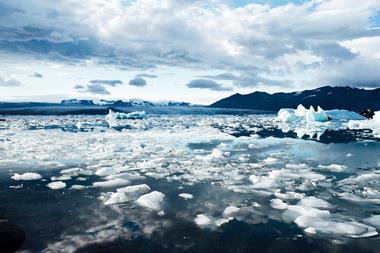The International Energy Agency (IEA) carved out sections dedicated to sustainable finance and the role of institutional investors in the latest edition of its flagship report on world energy investment, with one of the points the organisation makes being that sustainable debt issuance has been growing at a rate far outpacing that for new capital expenditure in renewable energy and energy efficiency.
One of the main findings of the report, which published last week, was that capital spending was set to fall by one-fifth, or almost $400bn (€352.5bn), this year due to the COVID-19 pandemic, instead of edging higher by 2% as seemed possible at the start of the year.
In the section on sustainable finance, the influential body noted that, in the period from 2014, overall sustainable debt issuance – including labelled green bonds, green and sustainable loans, and sustainability-linked debt – grew more than tenfold, while new spending in renewables and efficiency remained relatively stable.
So far the sales of this debt had “had more of an impact on improving funding for existing programmes, refinancing assets and facilitating sustainability dialogue between investors and companies,” it said.
“Some mismatch may stem from availability of opportunities that meet liquidity and asset allocation requirements for investors, but it may also represent the different speeds at which sustainability efforts are proceeding in the financial markets compared with policies and decision-making for new capital formation for real energy assets,” it added.
With regard to green bonds specifically, the agency said there was scope for these to play a greater role in financing companies and projects in emerging markets, because of higher credit constraints and investments relying more on balance sheets in those economies.
Amundi and HSBC Global Asset Management have each combined with the International Finance Corporation to launch green bonds funds to tap into and address this phenomenon.
Institutional investors’ role
The agency also explicitly dedicated a section of the report to the role of institutional investors, writing that they had “long played a role in fundraising by companies, but an emerging question for policy makers is the extent to which investors can more directly help finance growing investments ahead, especially in clean energy sectors”.
In an apparent bid to help shed some light on this question, the IEA reported on investor and capital market trends in the three main channels through which it said institutional investors provide finance: companies, projects, and funds or pooled investment vehicles based on energy assets.
“The energy investment implications of shareholding depends not just on buying and selling, but the extent to which investors became more engaged owners”
IEA 2020 World Energy Investment report
Focussing on the listed equities shareholding facet of the first channel, the IEA highlighted that investors had reduced their positions in the top listed energy companies during 2018 and 2019, but said that “the energy investment implications of shareholding depends not just on buying and selling, but the extent to which investors became more engaged owners”.
“Further monitoring is needed to assess investor commitments and industry impacts in this area, particularly amid the current economic downturn,” the IEA said.
With regard to project finance, the agency said institutional investors have played a growing role in the market for acquisitions and refinancing of energy assets, accounting for over $20bn, or nearly 25% of transactions, up from less than one-fifth in 2010.
The IEA said that although refinancing of existing assets did not ”directly add new projects to the mix”, it played an important role in energy investment by creating opportunities for developers to recycle their capital, reduce financing costs and improve confidence to undertake new projects.
Looking ahead, the IEA said there was “considerable scope” for more investor participation in this area, particularly in renewables, but that this depended on “policies that support cash flow profiles aligned with investor risk-return profiles and reduced barriers to participation as well as investor efforts to build in-house skills and manage scale and liquidity issues associated with direct investments”.
“This is an area ripe for further work,” it said.
The IEA also turned its attention to securitisation and yieldcos, noting for example with regard to the former that an important question for investors and policymakers alike “pertains to whether clean energy assets can manage cash flow risks better than other options, enabling lower cost of capital”.
It cited evidence suggesting financial performance benefits for clean energy and efficiency, but said it was nonetheless “not clear that green debt always outperforms conventional bonds and regulators lack an empirical track record”.
“Further analysis is needed, including data collection at asset level and translation of performance metrics into credit model parameters,” the agency said.
Investors renew call for WEO change
In a few weeks the IEA is due to publish a special edition of its annual World Energy Outlook (WEO), focussed on “quantifying the economic and job-creation potential of building a more resilient and cleaner energy sector”.
Last week, a few days after the publication of the world energy investment report, investors and others called on the agency to “make a 1.5⁰C-aligned scenario central”.
“In light of the IEA’s considerable impact on global energy decision-making, the tools you provide will shape countless investments and decisions that may either lock in a high carbon future to devastating effect or, conversely, accelerate the transition to a resilient clean energy economy,” they said in a letter to IEA executive director Fatih Birol.
“The stakes are high and we look forward to you rising to the challenge of guiding robust recovery pathways aligned with 1.5ºC.”
Investors and investor groups signing the letter included WHEB Asset Management, Nordea Life & Pension, Alecta, Storebrand, Sarasin & Partners, PensionDanmark, and the Institutional Investors Group on Climate Change.
The letter is a follow-up to one sent in November last year, in which the signatories welcomed improvements that had been made to the WEO, but said they “should not be mistaken for delivering upon urgently needed substantial changes”.
Commenting on the new letter, Natasha Landell-Mills, head of stewardship at Sarasin, said: ”By responding positively to this request, the IEA would provide multiple stakeholders with vital information to help protect the planet. Above all, it would play its part in making the Paris Agreement a reality.”
To read the digital edition of IPE’s latest magazine click here.








No comments yet